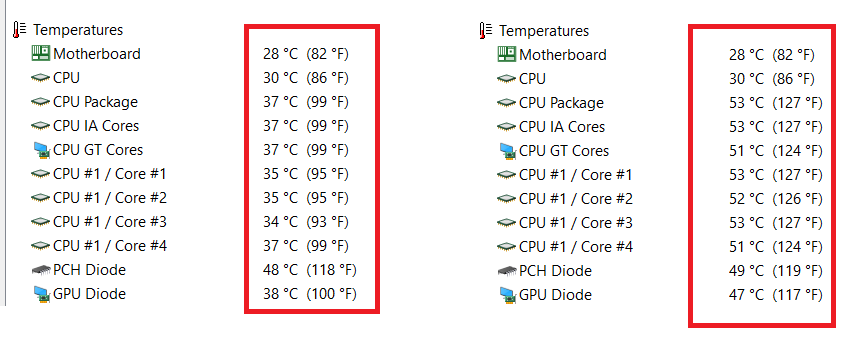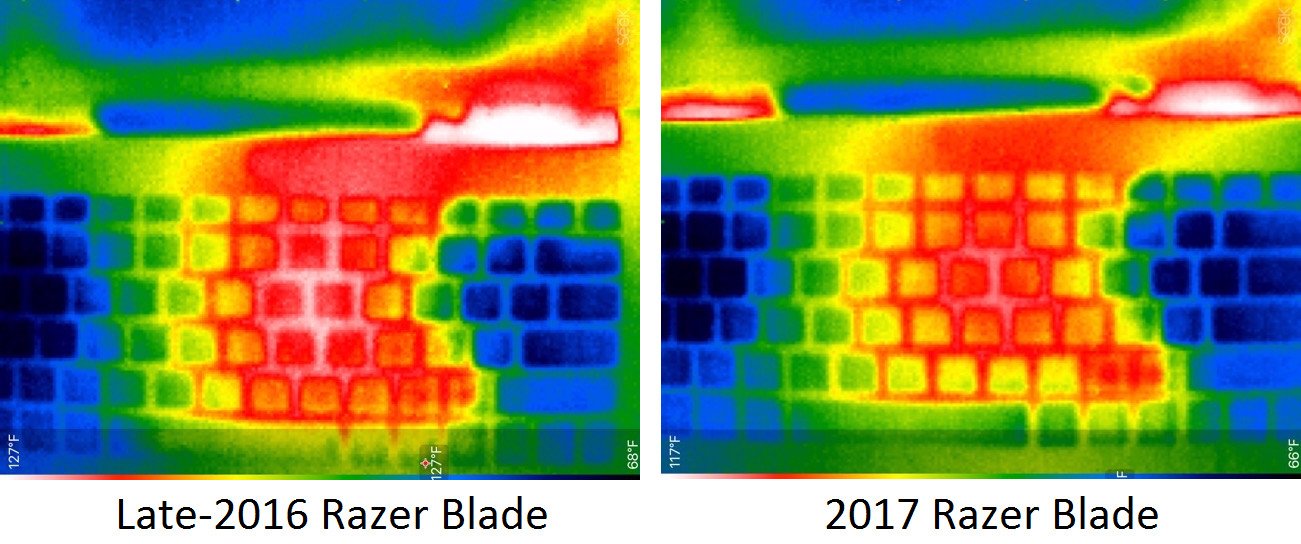Razer Blade 4K review: A stunning display comes to a slightly aging gaming laptop
The refreshed 4K Razer Blade is a stellar addition to the Razer family, but it comes a little late to the game.
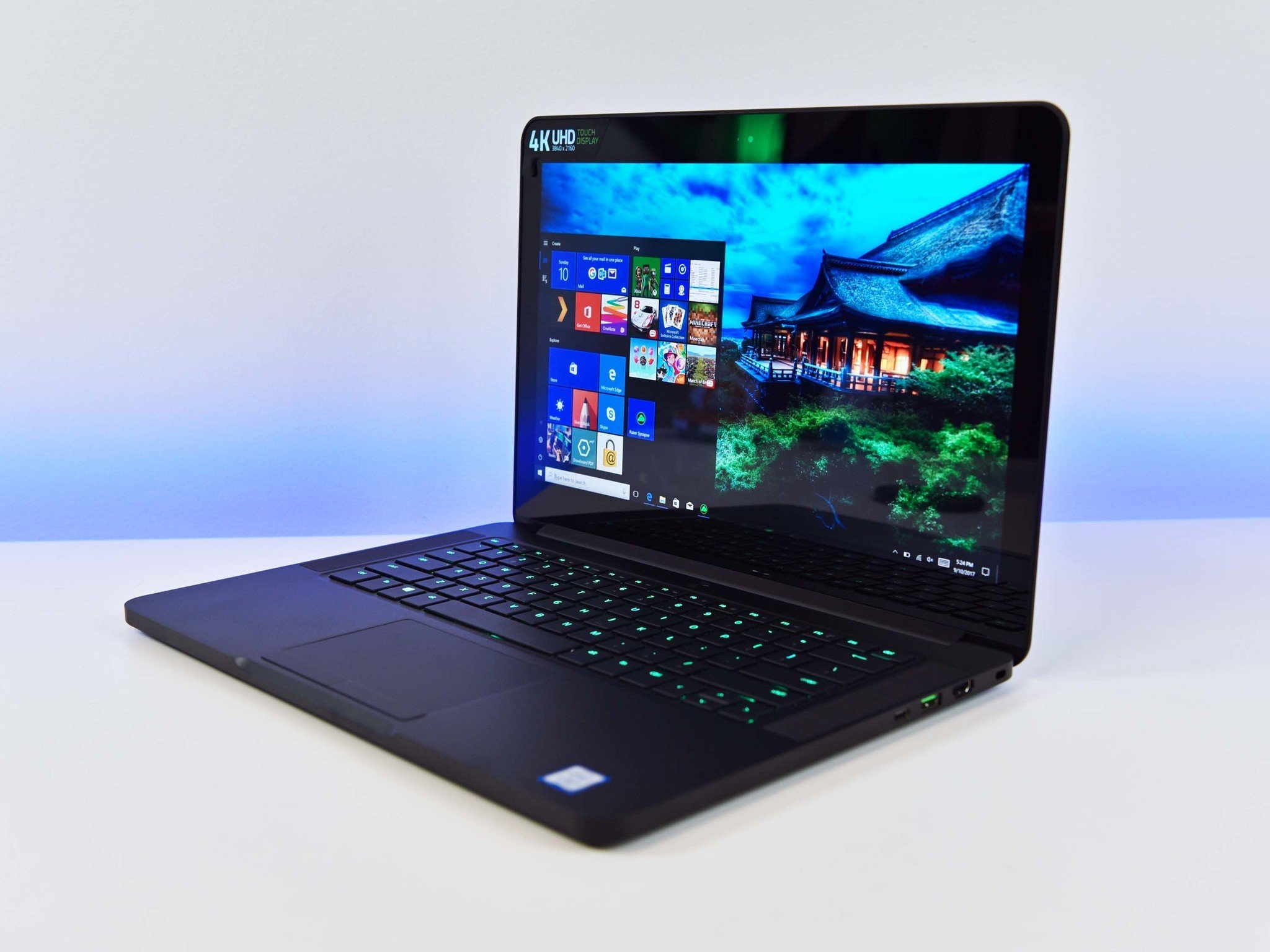
The Blade is Razer's classic premium gaming laptop with a 14-inch display, RGB Chroma keyboard, Thunderbolt 3 and a powerful NVIDIA GTX 1060 video card powered by a beefy Intel quad-core Core i7 processor.
Earlier this year, I gave a mini-review of that refreshed Intel "Kaby Lake" model, which upgraded the processor to a 7th generation one, made the fans quieter, reduced "coil whine," and added faster RAM. That version though was the matte full HD (1920 x 1080) model with the promise of a 4K variant coming later in 2017.
Well, nearly six months later Razer has finally delivered on the 3840 x 2160 model, and we got one of the first looks at this Blade premium edition.
About this review
Razer sent a loaner Blade 4K for this write-up. The model considered features a 512GB SSD for storage and a 14-inch 4K IGZO display. The total cost is $2,399. The only configuration variations for the new Blade 4K is the storage amount (up to 1TB), which bumps the total price to $2,799.
Minor improvements that add up
What's new – Razer Blade 2017 4K
Not much has changed since I reviewed the full HD version, but this model is more about replacing the original QHD+ (3200 x 1800) iteration of the Blade from late-2016 and offering a choice from the matte, non-touch full HD one.
All the latest news, reviews, and guides for Windows and Xbox diehards.
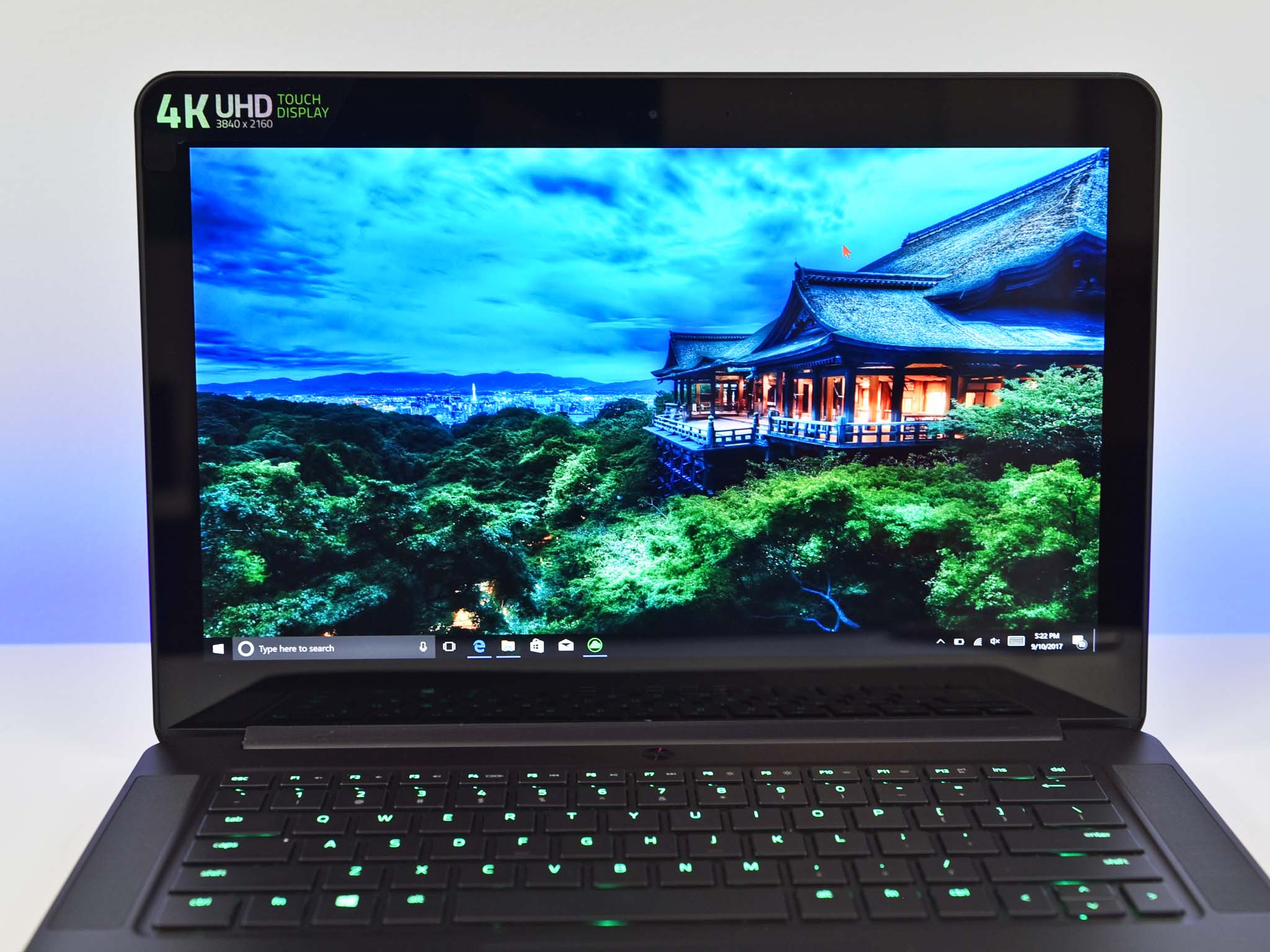
Our video editor Mark Guim uses the glossy touch model for his work when mobile and gave it a thorough review last December.
Video and graphics pros prefer the Blade's power thanks to that NVIDIA GTX 1060 graphics card, but it's the high-resolution display they like as do some gamers.
Razer Blade specifications
| Category | Razer Blade 2017 |
|---|---|
| OS | Windows 10 Home 64-bit |
| Material | CNC-machine aluminum single chassis design |
| Processor | Intel Core i7-7700U 2.8GHz / 3.8GHz (Base/Turbo) |
| Chipset | Mobile Intel HM175 |
| Storage | 512GB or 1TB PCIe NVMe SSD (Samsung PM961) |
| RAM | 16GB LPDDR3-2,400 MHz (User upgradable) |
| Display | 14-inch IGZO Touch Screen 16:9 aspect ratio 3840 x 2160 4K UHD |
| Graphics | Intel HD Graphics 630 NVIDIA GeForce GTX 1060 (6GB) |
| Ports | 1x Thunderbolt 3 (USB-C) 2x USB 3.0 port (SuperSpeed) 1x HDMI 2.0a 3.5mm headphone/microphone |
| Audio | Top-firing stereo speakers Dolby Digital Plus Home Theater Edition |
| Wireless | Killer Wireless-AC 1535 (802.11a/b/g/n/ac + Bluetooth 4.1) |
| Keyboard | Razer Chroma anti-ghosting keyboard with individually backlit keys |
| Camera | 2.0MP |
| Battery | 70WHr 165W barrel power adapter |
| Weight | 4.3 lbs. / 1.95 kg |
| Dimensions | (H x W x D) 0.70 x 13.6 x 9.3 inches 17.9 x 345 x 235 mm |
| Price | $2,399 or $2,799 |
Of course, Razer is still offering the matte, full HD model which comes with 256GB, 512GB, or 1TB options for storage ranging from $1,899 to $2,499. That is the Razer Blade is what I prefer for gaming due to less eye-strain from a glossy screen.
Stunning IGZO 4K
Razer Blade display
Razer opted to replace the QHD+ (3200 x 1800) Sharp IGZO display with a 4K UHD (3840 x 2160) one. As to why it took so long from the announcement to release it is likely due to supply chain issues. The Sharp IGZO is one of the best displays around made famous by Dell's XPS 13 and XPS 15 line.
Running through a display colorimeter, the Blade 4K pulled of a 99 percent Adobe sRGB rating and 79 percent Adobe RGB, which are excellent for such an expensive laptop. There was little color correction needed too as is the usual case with IGZO panels.
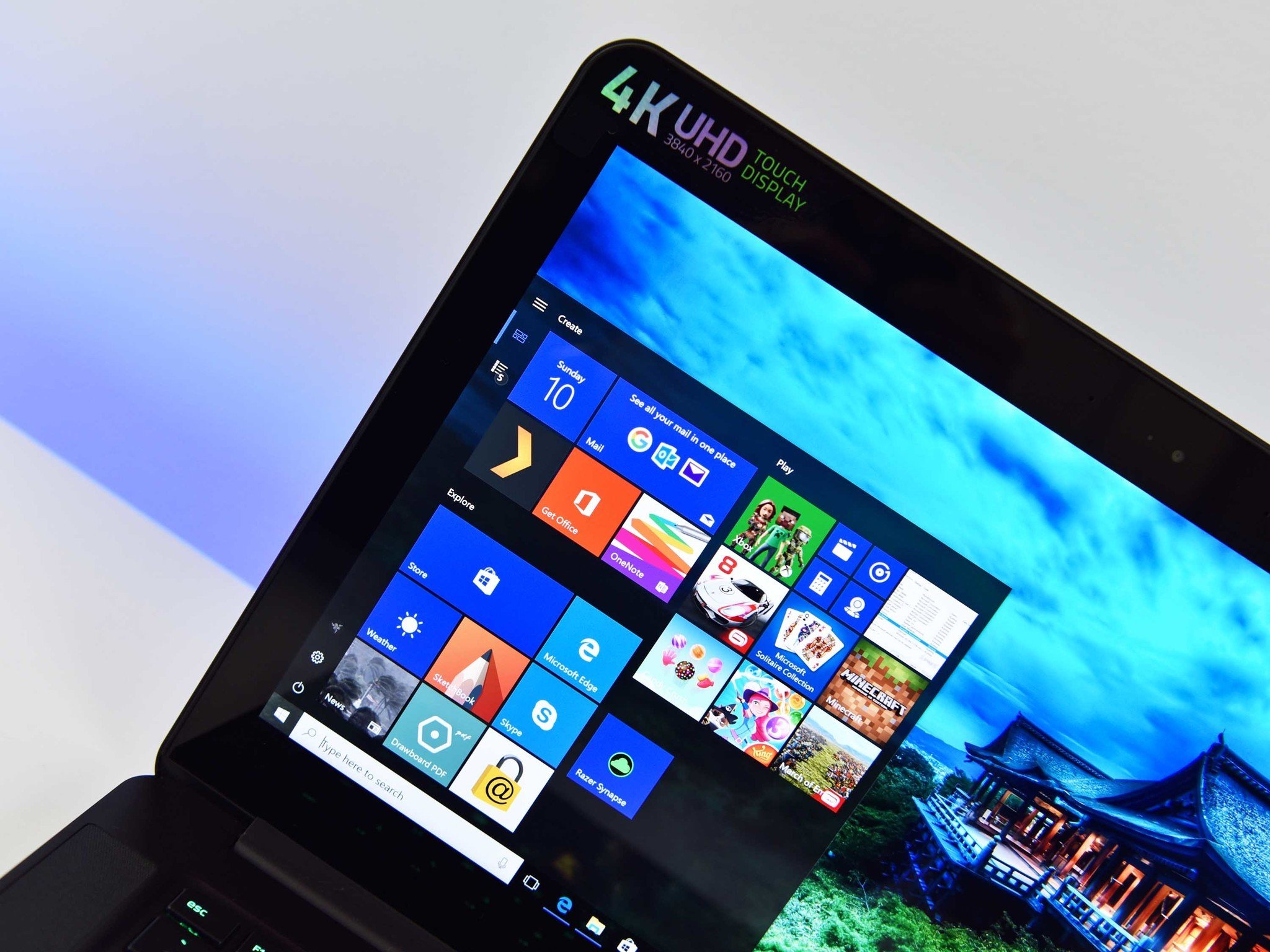
Brightness is good too coming in around 350 nits making it slightly brighter than the Razer Blade Stealth. The display is also highly responsive to touch. I didn't have any issues with tapping, scrolling or pinching to zoom.
Putting aside display benchmarks and just taking it all in the Razer Blade's 4K display is marvelous. While Dell wins with the 4K panel found in its XPS 15 – which is larger with narrower bezels – Razer's is very impressive for a category that typically trades reduced color accuracy for speed.
Speaking of, I did not perceive much ghosting with IGZO panel at 4K, but it is there slightly when compared to a gaming laptop with a G-Sync monitor. Nonetheless, it's better than my Dell XPS 15 at full HD, which has it more severe.
For gaming, it should be noted that without the help of an external GPU like the Razer Core with a GTX 1080 or higher graphics card you likely won't be doing much actual 4K gaming with the Blade. While the GTX 1060 is a fantastic card, 4K gaming can only be achieved by drastically reducing a game's graphics and even then it could be a challenge.
Instead, the Razer Blade 4K is more about having a glossy, touch display for regular Windows usage or using professional apps. Still, it does offer some tangible benefits too including sharper, more accurate colors when compared to the full HD model.
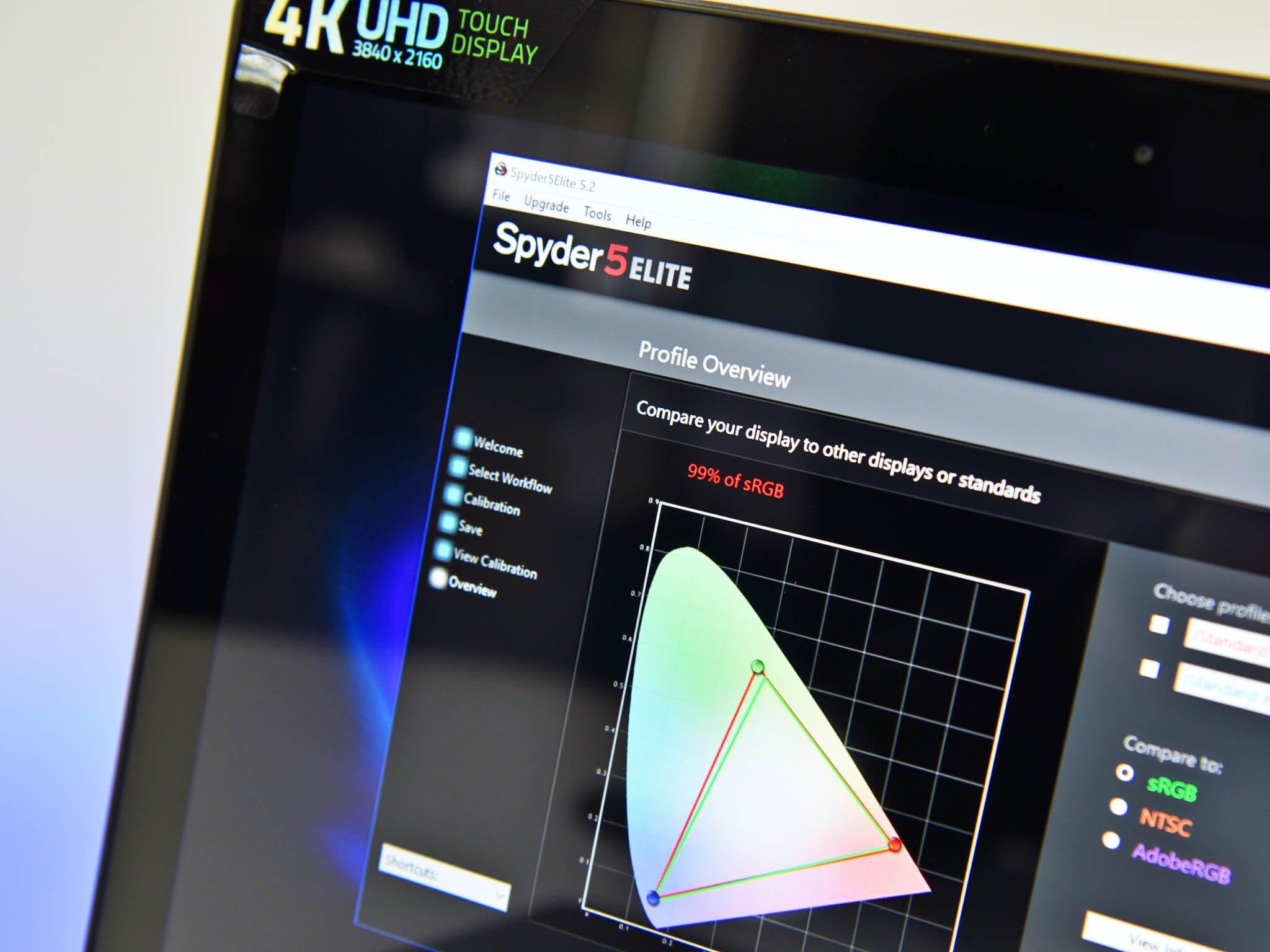
Finally, it should be evident that despite the higher resolution panel the Razer Blade still has extremely thick bezels that look out of place on a 2017 laptop. The company swapped out the 12.5-inch panel for a 13.3-inch one in the smaller Blade Stealth 2017 reducing the bezels by 50 percent, but opted not to do something similar with the Razer Blade at 14-inches. Presumably, a 15.6-inch panel – the only other size mass produced – could not fit in the chassis. Even if it could, the battery draw of a 15.6-inch 4K display would be a challenge for the 70 WHr battery found in the Blade. Dell, by comparison, puts a massive 99WHr battery in its 4K XPS 15 and that has a slower GTX 1050 GPU.
Classic stays classic
Razer Blade design
Nothing has changed with the design of the new Blade besides the screen resolution. The Blade is still a CNC-machined black aluminum unibody build that feels outstanding to carry and use.
It should be noted that since the 4K model is touch-enabled (but no pen support, for those wondering), it does weigh 0.20 lbs (91 grams) heavier than the non-touch full HD edition, but matches the original QHD+ version. Side by side the weight difference is barely noticeable.
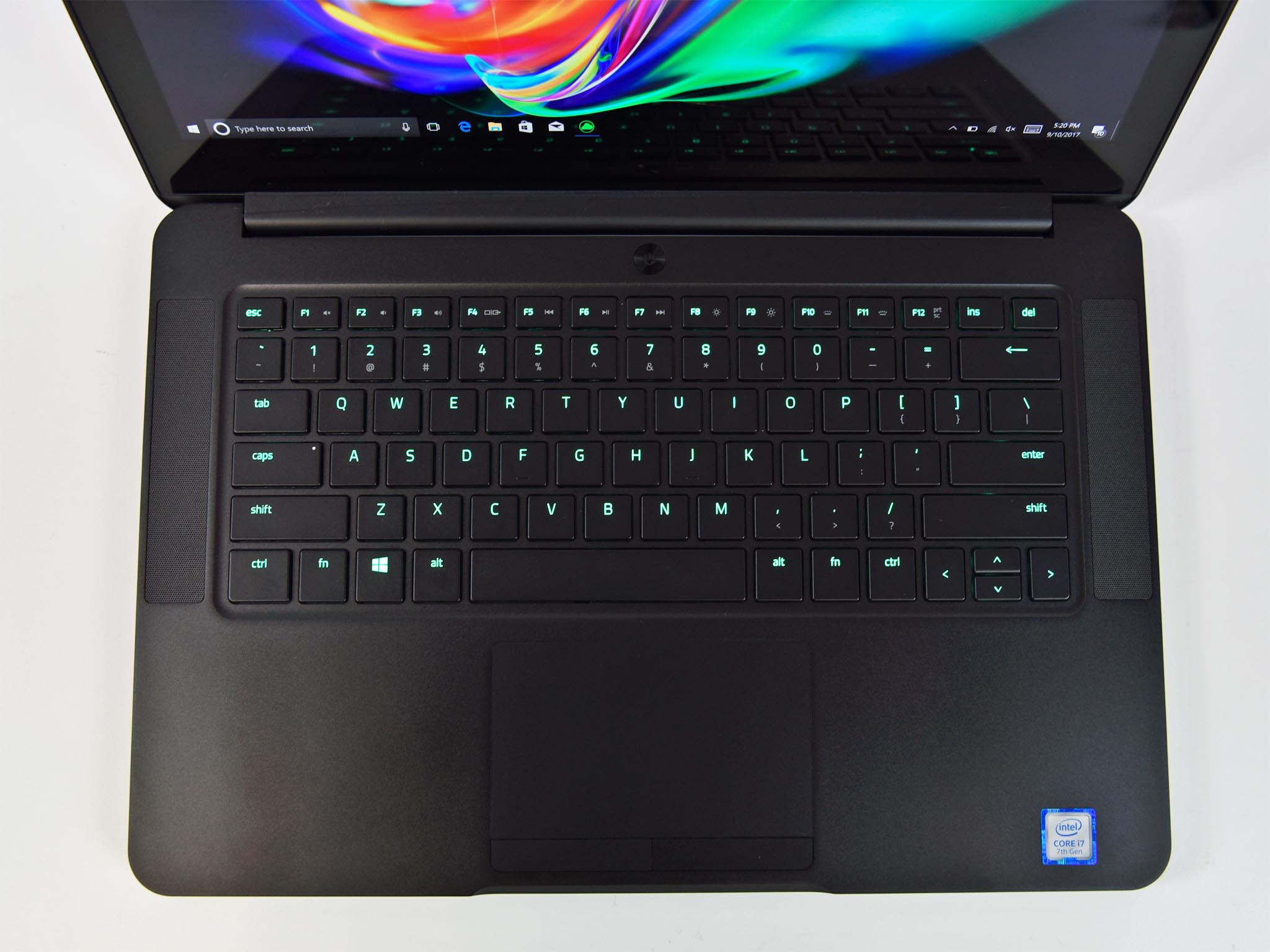
The area around the display is also glossy matching the screen; that contrasts with the matte model which has a matte bezel too.
Opening the Blade with one hand is still doable with the touch display too.
The left side includes the power port, two USB 3.0 ports, and the headphone jack. The right side has a Kensington security slot, HDMI 2.0 out, another USB 3.0 port, and a USB-C port with Thunderbolt 3. That HDMI port can power up to a 4K display at 60Hz, and the USB-C Thunderbolt 3 port can also connect to external displays or external GPUs.
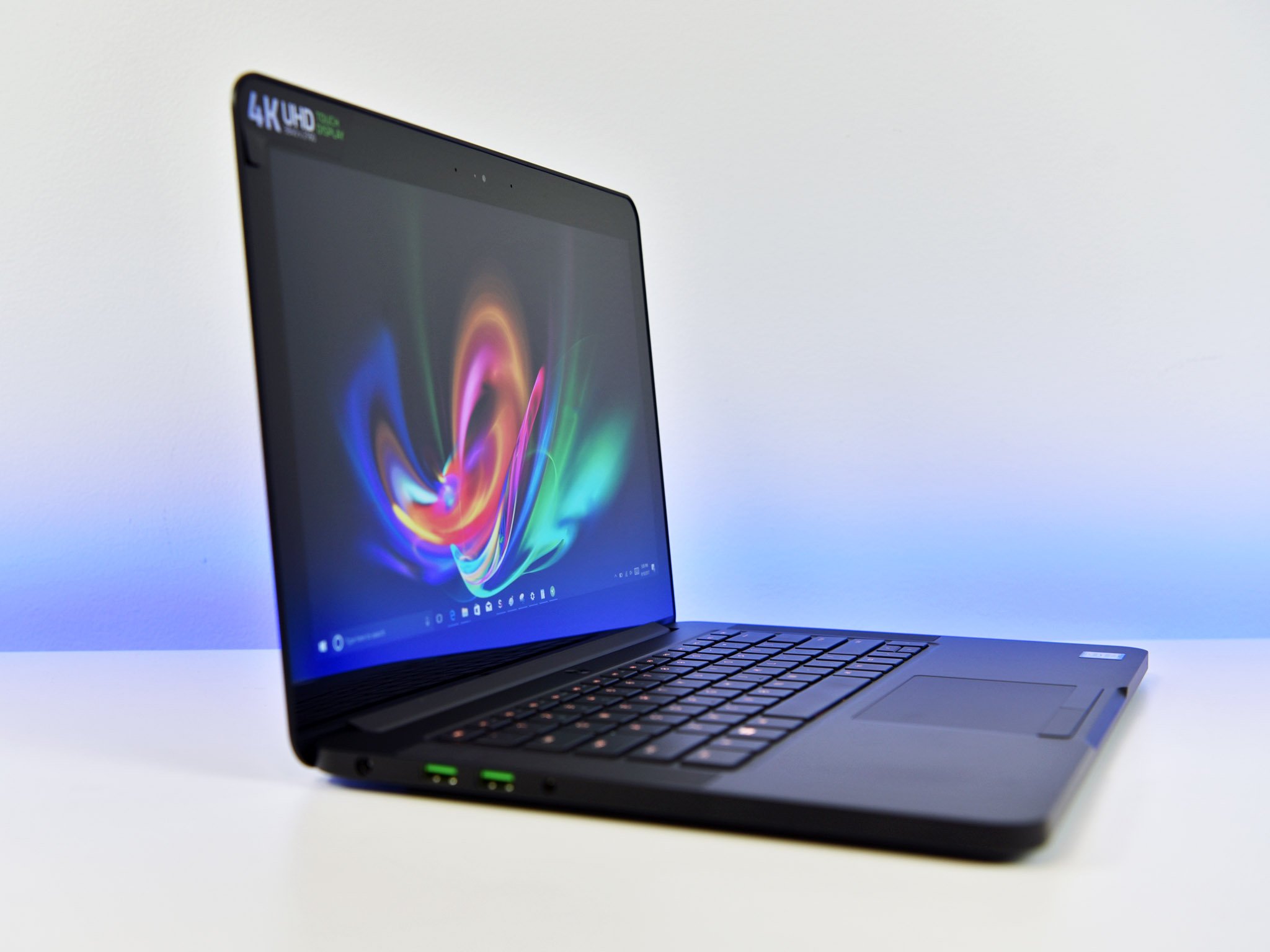
Like all of Razer's laptops, the Blade 4K is susceptible to fingerprints on the chassis. While you can use third-party skins to help prevent frequent wipe downs (as well as add protection from scratches), I'm still yearning for a more oleophobic and smudge free Blade someday.
Overall, it's hard not to love the Razer Blade's design. It has all the right ports, a slim even profile, and the weight – while not light – is at least backed up by some serious graphics hardware.
Quad-power
Razer Blade benchmarks
The 4K Razer Blade has the same Intel Core i7-7700HQ quad-core processor that has a baseline of 2.8GHz but can turbo to 3.8GHz when needed. Combined with the NVIDIA GeForce GTX 1060 with 6GB of video RAM and the Blade does quite well compared to the competition.
CPU
Geekbench 4.0 Benchmarks (Higher is better)
| Device | CPU | Single core | Multi core |
|---|---|---|---|
| Razer Blade 2017 | i7-7700HQ | 4,277 | 13,597 |
| Lenovo Legion Y720 | i7-7700HQ | 4,697 | 14,810 |
| Razer Blade Stealth | i7-7500U | 4,211 | 8,333 |
| Dell XPS 15 | i7-7700HQ | 4,503 | 13,587 |
| Razer Blade Pro | i7-6700HQ | 3,660 | 12,325 |
| Surface Laptop | i7-7660U | 4,677 | 9,538 |
| Dell XPS 13 (9360) | i7-6560U | 4,120 | 7,829 |
| HP Spectre 13 | i7-7500U | 4,100 | 7,469 |
| Surface Book | i7-6600U | 3,948 | 7,415 |
The i7-7700HQ is solid quad-core CPU that ranks near the top of our all our laptop benchmarks.
GPU
3DMark - Fire Strike (higher is better)
| Laptop | GPU | Score |
|---|---|---|
| Razer Blade 2017 | GTX 1060 | 9,278 |
| Razer Blade 2016 | GTX 1060 | 8,665 |
| Razer Blade Pro | GTX 1080 | 12,976 |
PCMark
PCMark Home Conventional 3.0
| Device | Score | Comparison |
|---|---|---|
| Razer Blade | 3,280 | Better than 66 percent of all results |
| Razer Blade Stealth | 3,115 | Better than 58 percent of all results |
| Surface Laptop Core i7 | 3,156 | Better than 62 percent of all results |
| Surface Pro Core i7 | 3,055 | Better than 57 percent of all results |
| Samsung Notebook 9 15 Ext | 2,998 | Better than 57 percent of all results |
| Lenovo X1 Carbon Core i5 | 2,965 | Better than 57 percent of all results |
| HP EliteBook x360 G2 | 2,916 | Better than 52 percent of all results |
| Huawei MateBook X | 2,726 | Better than 46 percent of all results |
| HP Spectre x360 15 | 2,472 | Better than 41 percent of all results |
| Surface Laptop Core i5 | 2,494 | Better than 40 percent of all results |
The PCMark Home Conventional test takes a bunch of your hardware and determines how well it works together while performing some everyday tasks. The Razer Blade does well enough to be classified as VR-ready and will do very nicely with Microsoft's Mixed Reality Ultra platform.
SSD
CrystalDiskMark (Higher is better)
| Device | Read | Write |
|---|---|---|
| Raze Blade | 1,343 MB/s | 1,525 MB/s |
| Razer Blade Pro | 2,571 MB/s | 2,467 MB/s |
| Raze Blade Stealth | 1,281 MB/s | 1,330 MB/s |
| Dell XPS 15 (9560) | 2,207 MB/s | 1,628 MB/s |
| Lenovo Legion Y720 | 1,642 MB/s | 790 MB/s |
| Lenovo X1 Carbon | 1,518 MB/s | 1,188 MB/s |
| Samsung Notebook 9 15 Ext | 1,365 MB/s | 1,213 MB/s |
| Dell XPS 13 (9360) | 1,287 MB/s | 794 MB/s |
| HP Spectre x360 15 | 1,128 MB/s | 862 MB/s |
| Surface Laptop 512GB | 899 MB/s | 966 MB/s |
| Huawei MateBook X | 889 MB/s | 872 MB/s |
| Surface Laptop 256GB | 423 MB/s | 237 MB/s |
The storage performance with the Razer Blade is excellent. Razer has a good reputation with using premium Samsung SSDs – at least for the 512GB and 1TB models. That's the case here with a Samsung PM961 (960 EVO) being used in our 512GB configuration, and as expected it performs near the top, only being beat by the Razer Blade Pro's crazy RAID 0 configuration.
Overall, the Razer Blade still gets some of the best benchmarks compared to other premium laptops. Most of that is due to the sum of its parts including an excellent CPU, GPU, RAM, and storage, which are all quality parts. While other gaming laptops can outperform the Razer Blade, they tend to be thicker, heavier, and not as elegant for design. Razer here is balancing a bit of everything, and they do a good job of it.
keeping it chilled
Quieter fans and improved cooling
One of the biggest complaints about the late-2016 Razer Blade is that the fans, even on idle or light processing (like web browsing), would always be buzzing. Being a gaming laptop squeezed into a thin, metal body with a NVIDIA GTX 1060, none of that surprised or bothered me, but it did for others. You don't have to look far in forums to see some user complaining about the fans always being on in the late-2016 Razer Blade.
The 2017 Razer Blade solves this problem. It appears that the cooling curve has been shifted with the fans turning on less frequently. When in idle or low CPU scenarios the fans completely turn off. It's dead quiet, and it's a welcome change.
The peak temperature of the chassis (upper keyboard deck) was observed after twenty minutes of stress testing:
Infared thermal testing - Seek Camera
| Laptop | Peak temperature |
|---|---|
| Razer Blade 2017 | 120°F (49°C) |
| Razer Blade 2016 | 131°F (55°C) |
A difference of ten degrees is very significant and can make the difference between comfortable and uncomfortable for gaming.
Like the full HD Razer Blade 2017 edition, the 4K model appears to have no coil-whine issues. I'm immune to those high frequencies, so I am not bothered by coil whine. I even have a tough time identifying it. Nonetheless, a cursory search of Razer's forums, Reddit, and other places suggest people are quite happy with the lack of coil whine in this year's model.
Dazzling screens, dastardly power
Razer Blade battery takes a hit
It should not be surprising that a 4K display will drain more power than a full HD one and that is the case with the Razer Blade. Battery life drops from 6 to 7 hours of the 1920 x 1080 display to 4 to 5 hours at 4K. Much of that discrepancy depends on how bright you keep that 4K panel at and whether you are using the GTX 1060 or the native Intel HD graphics.
Charging the Blade's battery is still accomplished with the 165-watt barrel-shaped AC adapter with a braided cable although you can use a USB Type-C charger too if it has the proper output.
While I wouldn't describe the 4K Razer Blade's battery life as amazing, it is within the range for a gaming laptop with a quad-core processor and excellent GPU.
Better things on the horizon
Razer Blade 4K is a gorgeous upgrade that's a bit late
Here at Windows Central three of us own and use a Razer Blade laptop whether it is for gaming (myself and our gaming editor Jez Corden) or video editing (Mark Guim). It's the only laptop that matches a premium Ultrabook-like quality with high-performance hardware. In short, we're fans and not just impartial reviewers.
Granted, you pay for the Razer privilege too, and that is felt with the 4K variant, which starts at eye-watering $2,399. While you can buy a desktop PC for cheaper, or find a gaming laptop with better specifications for that price, you will rarely get one in a 4.3lb (1.95 kg) all-metal frame. Toss in that RGB Chroma keyboard, full Thunderbolt 3 USB Type-C, and a bevy of excellent components like fast SSD storage and RAM with a GTX 1060, and it's easy to appreciate what Razer has accomplished.
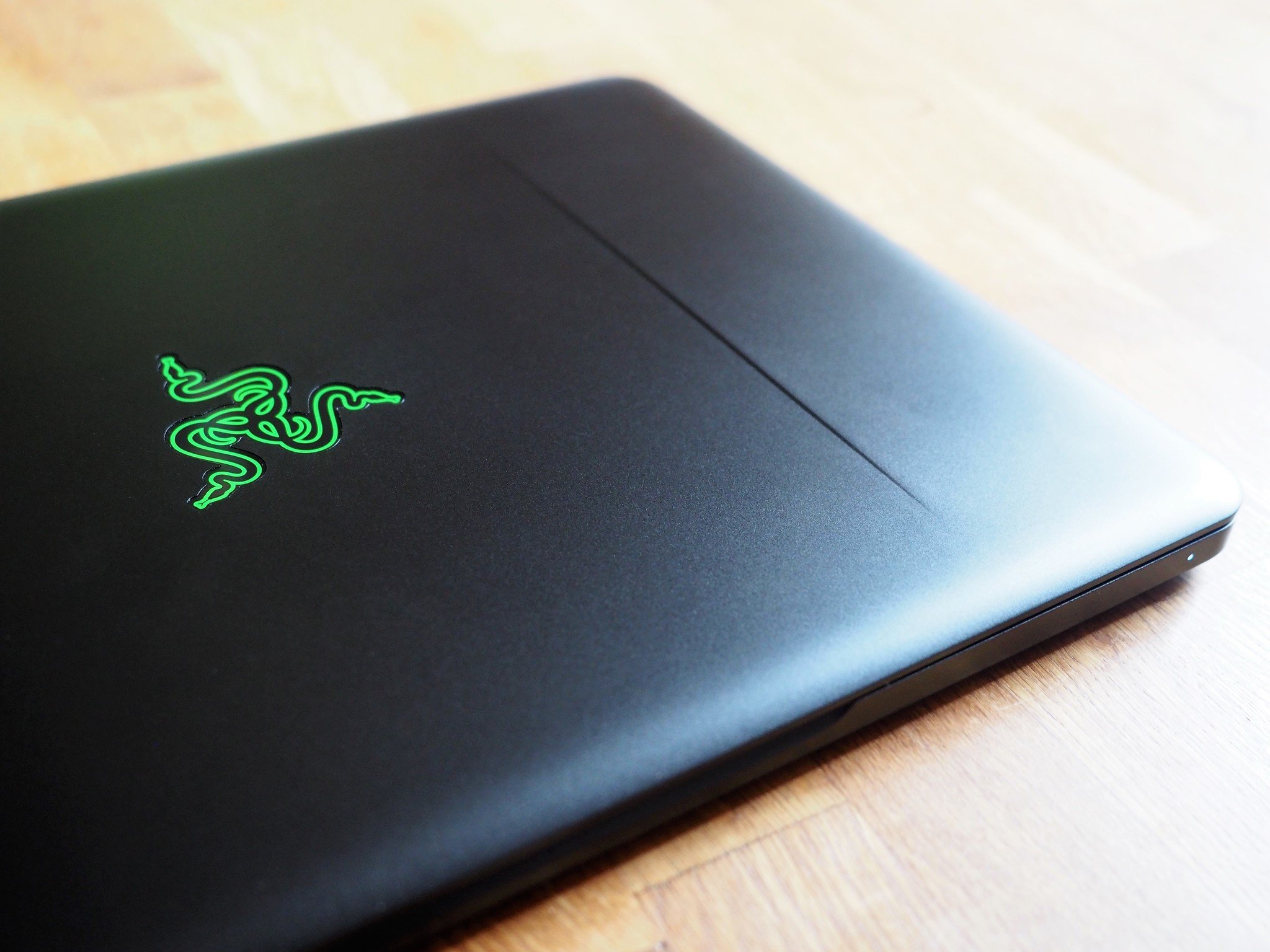
Nonetheless, the 4K display – which is drool-worthy – does come with some tradeoffs. For one, it's $300 more than the full HD model, which is fair but still significant. You also won't be gaming at 4K, which makes it more for those who just want an excellent day-to-day screen. There is also the hit on battery life that is not inconsequential.
Moreover, I think it is about time for a serious redesign of at least the display bezels. While many would argue that functionally bezels do not matter (they're right) Razer could win many more consumers over if they could achieve a near-bezel-less Razer Blade. Razer has been winning many cross-over converts because of its overall aesthetic and premium parts, but its crown jewel – the 14-inch Blade – is starting to fall behind the competition despite its past achievements.
There is still the issue with the touch pad too. Razer is thankfully moving towards Microsoft's more accurate and satisfying Precision drivers in the Razer Blade Stealth and Razer Blade Pro, but the 14-inch Blade reviewed here is still using Synaptics. Although the touch pad on this Blade is OK, Razer could again achieve more by utilizing Precision drivers.
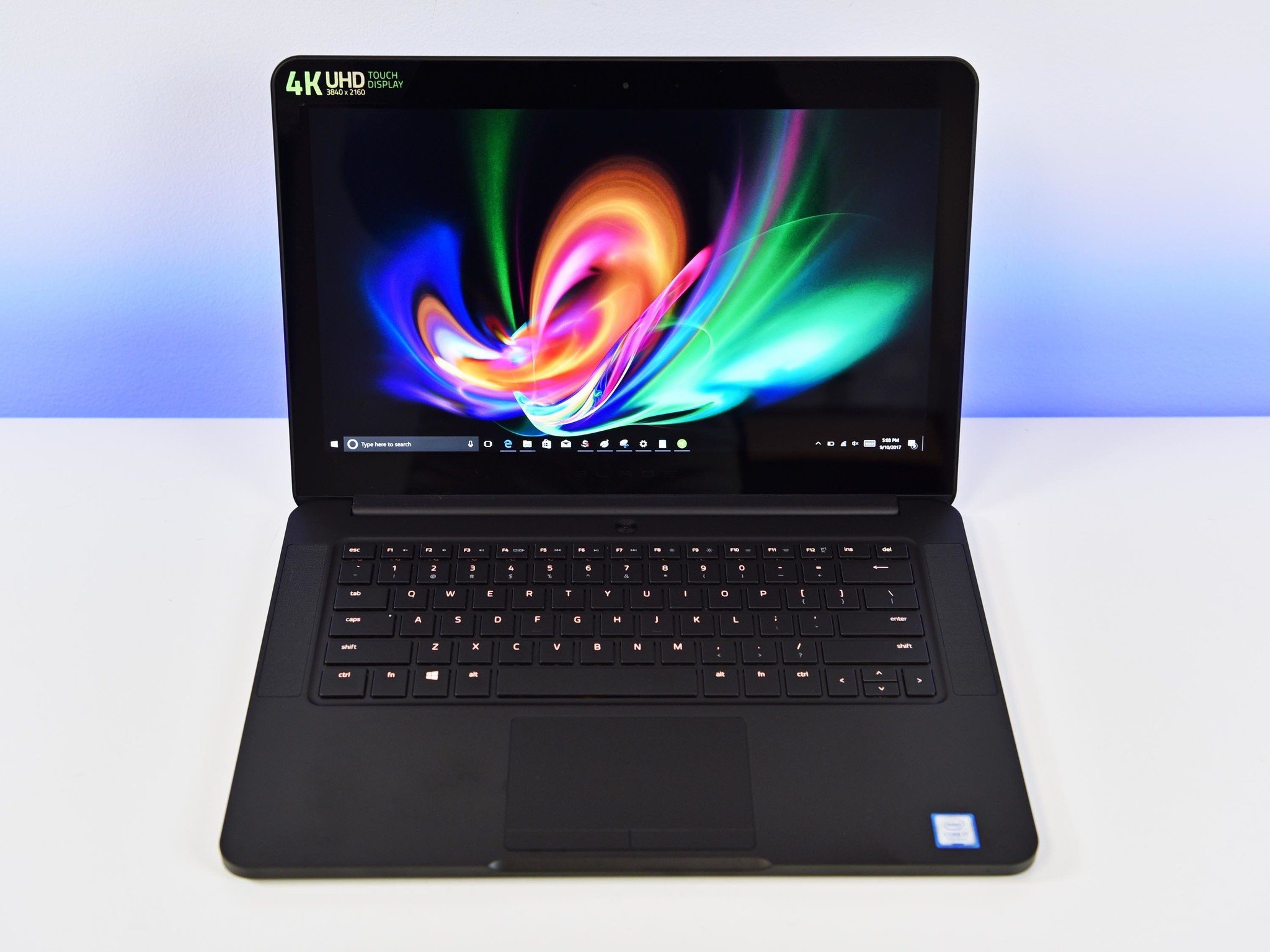
Finally, there is the matter of timing. Earlier this year, Razer announced the Kaby Lake refresh to the Blade series with the promise of a 4K version after that. No one expected it to be six months later, which for September 2017 makes this a very late-entry. Even newer Intel processors are scheduled for early 2018 (a.k.a. "Coffee Lake"), NVIDIA's Max-Q design lets manufacturers do more with less for the GPU, and I fully expect Razer will do something about those display bezels and Precision touch pad.
All that makes recommending the Razer Blade 4K rather difficult. While there is nothing fundamentally wrong with the laptop – an important bullet point – there are just too many innovations available to Razer these days that could make it much more than its current form. The Razer Blade 4K is an excellent execution that is just a little too late.
Pros:
- Excellent, color-accurate 4K IGZO display.
- GTX 1060 is still an outstanding performer.
- Outstanding port selection with full Thunderbolt 3.
- Great typing experience and overall form factor.
Cons:
- Thick display bezels that feel dated.
- No Precision drivers for the touchpad.
- Still expensive compared to the competition.
- No Windows Hello.

Daniel Rubino is the Editor-in-chief of Windows Central. He is also the head reviewer, podcast co-host, and analyst. He has been covering Microsoft since 2007 when this site was called WMExperts (and later Windows Phone Central). His interests include Windows, laptops, next-gen computing, and wearable tech. He has reviewed laptops for over 10 years and is particularly fond of 2-in-1 convertibles, Arm64 processors, new form factors, and thin-and-light PCs. Before all this tech stuff, he worked on a Ph.D. in linguistics, performed polysomnographs in NYC, and was a motion-picture operator for 17 years.
